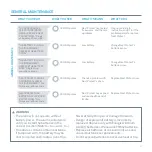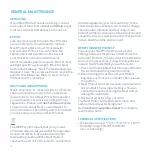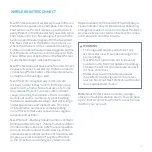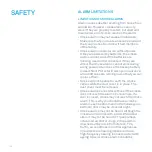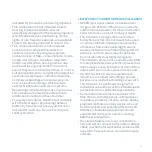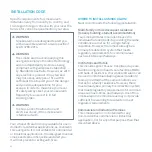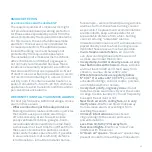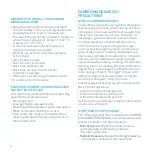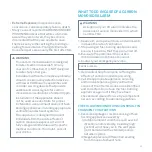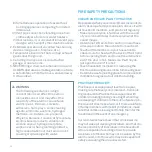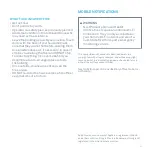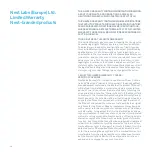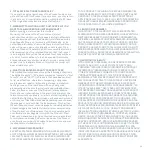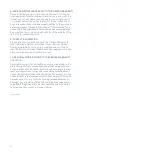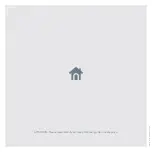
23
SMOKE DETECTION
Are more smoke alarms desirable?
The required number of smoke alarms might
not provide reliable early-warning protection
for those areas separated by a door from the
areas protected by the required smoke alarms
For this reason, the use of additional smoke
alarms for those areas is recommended for
increased protection The additional areas
include the dining room and hallways not
protected by the required smoke alarms
The installation of smoke alarms in kitchens,
attics (finished or unfinished) or garages is
not normally recommended because these
locations occasionally experience conditions
that can result in improper operation As Nest
Protect is also a carbon monoxide alarm, we do
not recommend installing it in a boiler room or
a utility room if it contains a water heater or a
boiler It should be 5–6 m (15–20 ft) from these
appliances to avoid transient conditions and/or
perceived nuisance alarms
WHERE NOT TO INSTALL YOUR SMOKE ALARMS
For best performance, AVOID installing a smoke
alarm in these areas:
•
Where combustion particles are produced.
Burning material creates combustion particles
that could cause your smoke alarm to go
off unnecessarily Areas to avoid include
poorly ventilated kitchens, garages, boats,
recreational vehicles and boiler rooms Keep
a smoke alarm at least 6 metres (20 feet) from
the source of combustion particles (cooker,
boiler, water heater, space heater), if possible
In areas where a 6-metre (20-foot) distance
is not possible – in mobile or smaller homes,
for example – we recommend placing a smoke
alarm as far from these fuel-burning sources
as possible The placement recommendations
are intended to keep a smoke detector at
a reasonable distance from a fuel- burning
source, reducing “unwanted” alarms
Unwanted alarms can occur if a smoke alarm is
placed directly next to a fuel-burning source
Ventilate these areas as much as possible
•
In air streams near kitchens.
Air currents
can draw cooking smoke into the sensor of
a smoke alarm near the kitchen
•
In very damp, humid or steamy areas, or very
near bathrooms with showers.
Keep a smoke
alarm at least 3 metres (10 feet) away from
showers, saunas, dishwashers, etc
•
Where temperatures are regularly below
5 °C (41 °F) or above 45 °C (113 °F),
including
unheated buildings, outdoor rooms, porches,
or unfinished attics or cellars
•
In very dusty, dirty, or greasy areas.
Do not
install a smoke alarm directly over the cooker
or range Clean a laundry room unit frequently
to keep it free of dust or lint
•
Near fresh air vents, ceiling fans, or in very
drafty areas.
Drafts can blow smoke away
from a smoke alarm, preventing it from
reaching the sensor
•
In insect-infested areas.
Insects can
clog openings to the sensor and cause
unwanted alarms
•
Less than 30.5 cm (12 in) away from
fluorescent lights.
Electrical “noise” can
interfere with the sensor
•
In “dead-air” spaces.
“Dead-air” spaces may
prevent smoke from reaching a smoke alarm
Summary of Contents for A0124
Page 1: ...Nest Protect Battery Smoke and carbon monoxide alarm User Guide Let s get started ...
Page 2: ...2 ...
Page 31: ...31 ...









